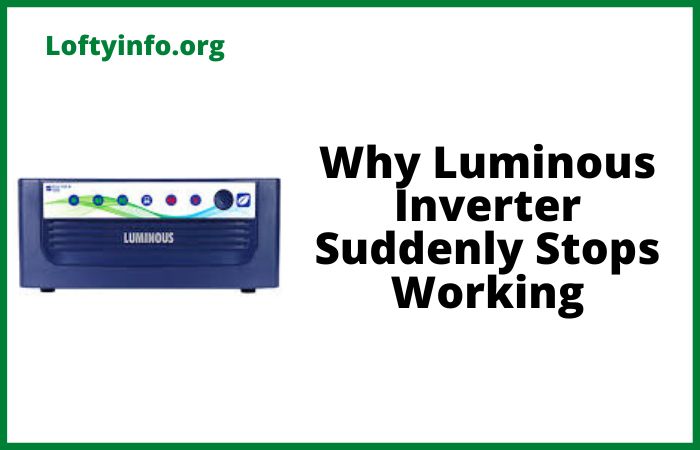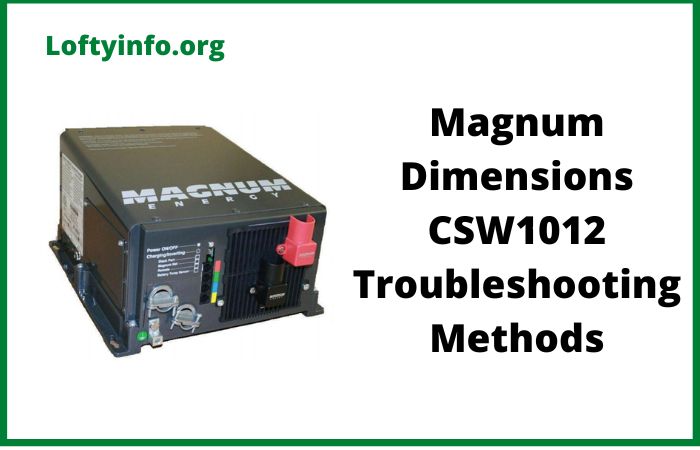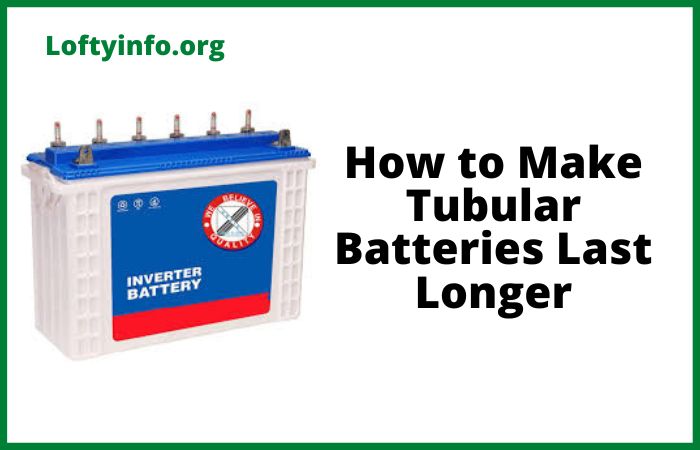Best Practices For Efficiency When Using 12V Off-Grid Solar System
When going off-grid, the best solar system to use is the 48v solar system setup because of low amps draw.
But a 48 volts system is quite expensive and this is where a 12 volts solar system comes in for an off-grid solar system due to affordability.
To get the most out of your 12 volts setup, it’s crucial to follow best practices that maximize efficiency, protect your equipment and ensure reliable power supply especially when the sun isn’t shining.
In this guide, we’ll cover expert tips for optimizing your 12V off-grid solar system from properly sizing your components to using energy-efficient appliances and maintaining your batteries.
Whether you’re just starting out or looking to improve your current system, these best practices for 12v off-grid solar system will help you get the most power, performance and longevity from your off-grid solar investment.
Best Practices For Efficiency When Using 12V Off-Grid Solar System
1. Prioritize Use of DC Appliances
One of the most overlooked strategies in off-grid solar systems is using appliances that run directly on DC (Direct Current) power instead of AC (Alternating Current).
This is well explained on different methods of powering DC appliances directly from solar panels without using battery.
This simple choice can dramatically improve your system’s overall efficiency and reduce complexity.
This is because solar panels produce DC electricity and batteries store DC electricity.
When you use AC appliances, you must convert DC power to AC power using an inverter.
This conversion process wastes 10-15% of the energy as heat.
For example, if you’re running a 100-watt AC appliance, your inverter might draw 115 watts from your battery system because the inverter consumes power from the battery too.
Over time, these losses add up significantly and reduce backup time.
DC appliances eliminate this conversion loss entirely.
A 100-watt DC appliance draws exactly 100 watts from your system.
This efficiency gain means your batteries last longer, your solar panels are more effective and you need a smaller overall system to meet your power needs.
Consider a practical example: A DC water pump can be connected directly to your solar panels through a charge controller, bypassing the battery entirely during daylight hours.
When the sun shines, the pump operates automatically without draining your battery reserves.
This direct solar-to-load configuration is particularly effective for water pumping, ventilation fans and lighting systems.
Popular DC appliances for off-grid systems include LED lights (available in 12V versions), DC refrigerators and freezers, fans, water pumps and even televisions.
DC refrigerators are particularly valuable because they’re typically 40-50% more efficient than their AC counterparts and represent one of the largest energy consumers in most off-grid setups.
The beauty of DC appliances extends beyond efficiency.
They’re often more reliable because they have fewer components and don’t rely on inverters, which are among the most failure-prone components in solar systems.
Many DC appliances are also designed for mobile and marine applications, making them inherently more robust and suitable for off-grid environments.
2. Use High Power Demanding Appliances In The Day Time
Smart load management is the difference between a struggling solar system and one that provides reliable power year-round.
The key principle is simple.
Run your highest power-demanding appliances during daylight hours when your solar panels are producing electricity.
This strategy serves multiple purposes.
First, it reduces the load on your battery system, extending battery life significantly.
Batteries have limited charge-discharge cycles and every amp-hour you can avoid pulling from batteries extends their lifespan.
Second, running loads during peak solar production means your appliances are essentially powered directly by the sun with your charge controller managing the power flow.
Let’s look at practical examples. Suppose you have a washing machine that draws 500 watts during operation.
Running it at 2 PM when your solar panels are producing peak power means the panels supply most of the energy directly.
Running the same washing machine at 8 PM forces your batteries to provide all 500 watts.
Water heating is another perfect candidate for daytime operation.
An electric water heater element might draw 1,000-1,500 watts.
Schedule this heating during peak solar hours (typically 10 AM to 3 PM) and you’ll have hot water all evening without draining your batteries.
Consider using timers and smart controllers to automate this process.
Simple mechanical timers can control water heaters, ventilation fans and other loads.
More sophisticated controllers can monitor solar production and automatically start loads when excess solar power is available.
3. Use Energy Efficient Appliances
Another best practice for 12v off-grid solar system is using energy efficient appliances.
In off-grid systems, every watt matters because your power generation is limited and expensive.
Choosing energy-efficient appliances isn’t just environmentally responsible, it’s economically essential.
The money saved on system components by choosing efficient appliances often exceeds the premium paid for those appliances.
Start with the biggest energy consumers.
Refrigeration typically accounts for 30-50% of off-grid energy consumption.
A standard household refrigerator might use 150-300 watts continuously, requiring 3,600-7,200 watt-hours daily.
An efficient DC refrigerator might use only 50-80 watts, reducing daily consumption to 1,200-1,900 watt-hours.
This difference could allow you to use a battery bank and solar array half the size.
4. Size Your Solar System Correctly
Proper system sizing is absolutely critical for off-grid success.
This includes the wattage of solar panels used to effective charge the batteries and power load during the day time.
Also size the battery bank well with enough backup time to avoid uninterruptible power supply.
Undersized systems lead to chronic battery undercharging, shortened component life and constant power anxiety.
Oversized systems waste money on unnecessary components.
Getting the size right requires careful analysis of your actual power needs.
Start with a detailed energy audit.
List every electrical device you’ll use, its power consumption and estimated daily usage hours.
Don’t guess but use a Kill-A-Watt meter or similar device to measure actual consumption.
Many appliances use significantly more or less power than their nameplates suggest.
For example, a laptop computer might be rated at 90 watts but actually consume 45 watts during typical use and only 5 watts when sleeping.
A microwave rated at 1,000 watts might actually draw 1,200 watts from your inverter due to conversion inefficiencies.
Consider seasonal variations in your energy audit.
Winter months typically have higher energy consumption (more lighting hours, heating loads) but lower solar production.
Size your system for the most challenging month and not just average conditions.
5. Choose Lithium Iron Phosphate (LiFePO4) Batteries
Battery technology has evolved dramatically and Lithium Iron Phosphate (LiFePO4) batteries now represent the best choice for most off-grid applications.
While the initial cost is higher than traditional lead-acid batteries, the total cost of ownership and performance advantages make them the clear winner.
The most significant advantage is depth of discharge capability. Lead-acid batteries should only be discharged to 50% capacity to maintain reasonable lifespan.
This means a 400Ah lead-acid battery bank provides only 200Ah of usable capacity.
LiFePO4 batteries can safely discharge to 20% capacity, meaning a 400Ah LiFePO4 bank provides 320Ah of usable capacity—60% more than lead-acid.
This deeper discharge capability means you need fewer batteries to store the same usable energy.
Lifespan differences are dramatic.
Quality lead-acid batteries might provide 500-800 charge cycles before needing replacement.
LiFePO4 batteries routinely provide 3,000-5,000 cycles with premium units rated for 6,000+ cycles.
Over a 20-year period, you might replace lead-acid batteries 3-4 times while LiFePO4 batteries continue operating.
Charging characteristics also favor LiFePO4 technology.
These batteries can accept much higher charging currents, meaning they recharge faster during limited sunlight hours.
Lead-acid batteries require complex charging profiles with bulk, absorption and float stages.
LiFePO4 batteries use simpler charging profiles and don’t require regular equalization or maintenance.
Temperature performance is another advantage.
LiFePO4 batteries maintain capacity and charging ability in cold weather much better than lead-acid alternatives.
They also generate less heat during charging and discharging, reducing cooling requirements.
Safety is paramount in off-grid installations and LiFePO4 batteries excel here too.
They don’t produce hydrogen gas during charging (eliminating explosion risks), can’t experience thermal runaway like some lithium technologies and don’t contain toxic materials like lead-acid batteries.
6. Choose Monocrystalline Solar Panels
Not all solar panels are created equal and the type you choose significantly impacts your system’s performance especially in space-constrained off-grid applications.
Monocrystalline panels represent the premium choice for most off-grid installations.
Monocrystalline panels offer the highest efficiency among commercially available panel types typically 18-22% compared to 15-17% for polycrystalline panels.
This efficiency advantage means you get more power from the same roof or ground space.
In space-constrained installations like RVs or small cabins, this efficiency premium is worth the additional cost.
Performance in low-light conditions is another area where monocrystalline panels excel.
During early morning, late evening or cloudy conditions, monocrystalline panels maintain higher output than polycrystalline alternatives.
This extended production window is particularly valuable in off-grid systems where every watt-hour matters.
Temperature coefficient is a technical specification that becomes important in hot climates.
Solar panels lose efficiency as they heat up but monocrystalline panels typically have better temperature coefficients than polycrystalline panels.
In hot climates, this can translate to 5-10% better performance during peak summer conditions.
Longevity is another factor favoring monocrystalline technology.
While all quality panels carry 20-25 year warranties, monocrystalline panels typically maintain their performance longer.
The more uniform crystal structure is less susceptible to degradation from thermal cycling and UV exposure.
7. Use An Hybrid Inverter With MPPT Charge Controller or Use a Standalone MPPT Charge Controller
The charge controller is the brain of your solar system, managing power flow from panels to batteries while protecting batteries from overcharging.
Maximum Power Point Tracking (MPPT) controllers represent a significant advancement over older Pulse Width Modulation (PWM) technology and are essential for modern off-grid systems.
MPPT controllers can increase power harvest by 20-40% compared to PWM controllers, particularly in off-grid applications where this efficiency gain is most valuable.
Solar panels have a specific voltage and current combination that produces maximum power called the Maximum Power Point.
This point changes constantly based on temperature, irradiance and load conditions.
MPPT controllers continuously monitor and adjust to maintain operation at this optimal point.
PWM controllers simply switch the connection between panels and batteries on and off rapidly without optimization.
This fundamental difference in operation explains the significant performance gap.
The advantage is most pronounced when panel voltage significantly exceeds battery voltage.
For example, using 24V or 36V panels to charge 12V batteries with an MPPT controller can increase power harvest by 30-40%.
PWM controllers can’t efficiently use higher voltage panels, limiting your panel selection options.
Cold weather performance strongly favors MPPT controllers.
Solar panels produce higher voltage in cold conditions and MPPT controllers convert this excess voltage into additional current increasing power output.
PWM controllers can’t take advantage of this cold-weather voltage boost.
MPPT controllers also handle partial shading better than PWM controllers.
When part of your solar array is shaded, MPPT controllers can continue optimizing power from unshaded panels.
PWM controllers typically see reduced performance from the entire array when any part is shaded.
Modern MPPT controllers include advanced features particularly valuable in off-grid applications.
Battery temperature compensation adjusts charging voltage based on battery temperature, extending battery life.
Load output terminals provide regulated power for DC loads.
Programming options allow optimization for specific battery types and usage patterns.
The investment in MPPT technology pays for itself through increased power harvest, especially in off-grid applications where every watt-hour is valuable.
While PWM controllers cost less initially, MPPT controllers often provide better value through improved performance and features.






